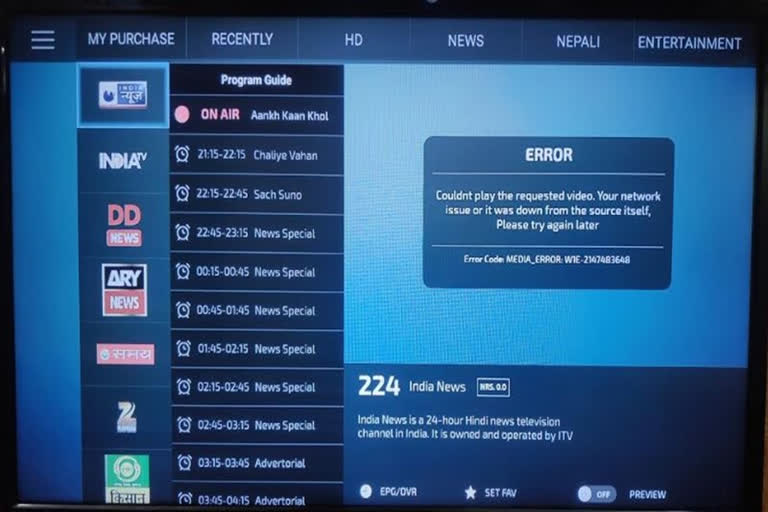New Delhi: In a significant development on Thursday evening that is reflective of the prevailing public mood in Nepal, cable TV operators on their own took off all private Indian TV News channels off air, letting only Indian national broadcaster Doordarshan operate.
However, the cable operators have not blocked any of the vastly popular Indian TV entertainment channels.
A Nepal government source working with the publicity department told ETV Bharat on the phone that the ban decision was taken because of the ultra nationalist rhetoric run by Indian private news TV channels.
Watch:Nepal at the crossroads
“The decision has nothing to do with the Nepal government. The Indian televised news content continues to insult the Nepal government, Nepali people and culture with impunity. Nor do they respect our map. This is in line with what the Nepali public feels,” the official said on condition of anonymity.
“The development merely underlines the rampant feeling in Nepal that India has an overly big-brother attitude towards us,” the official added.
But there is reason to believe that government pressure may have contributed to the move as Nepali media reported that government spokesperson Dr Yubaraj Khatiwada had announced at a press conference on Thursday that the government will seek political and legal remedies against the Indian media besides mobilizing diplomatic means to curb the misinformation being spread about Nepal by the Indian media.
India’s relations with Nepal had hit a rough patch in May when India announced the completion of the last leg of a 80-km-long stretch on the Kailash-Mansarovar Yatra (KMY) road. The road ends near the Lipulekh pass which Nepal has claimed to be part of its territory besides the two other localities of Limpiyadhura and Kalapani, all together cobbling up an area of about 400 sq km.
Read also:Bihar: Nepal removes temporary camp, watch tower after military talks
The road, expected to ease pilgrimage to the holy Kailash mountain and the Mansarovar lake in China’s Tibet Autonomous Region (TAR), will also facilitate much faster military movement and deployment in the forward areas to the border with China.
Indian Army chief Manoj Mukund Naravane had then hinted about a third country being behind Nepal’s objection.
Last month, Nepal parliament brought about an amendment to the country’s constitution that has declared Lipulekh, Kalapani and Limpiyadhura to be part of Nepal’s sovereign territory.
The Nepal development comes amid an ongoing tense military conflict between Indian and China across several flashpoints along the Line of Actual Control (LAC) in eastern Ladakh from May onwards while confrontations between the two militaries have also been reported from Sikkim.
One reason for the India-China confrontation is over the construction of a strategic 255-km-long border road by India snaking through its territory connecting Shyok village to Daulat Beg Oldi (DBO), a major Indian military base, which is located near the Karakoram pass.
